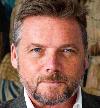President Ramaphosa has declined to make public the Ministerial Performance Assessments he instituted in 2020, contending that he does not wish their disclosure to be used as a political tool to embarrass members of his cabinet.
The obvious conclusion to be drawn is that, at best, the performance assessments themselves are flawed and inadequate, or more likely, that the performance of Ministers is so poor as to expose in black and white what the country already knows experientially. That is, with few exceptions, his cabinet is unfit for office and that the ultimate embarrassment lies with the President for its appointment, retention and performance.
But as 2023 draws to a close, there is nothing preventing the public from conducting its own ‘Performance Assessment’ of the President and members of his cabinet based on the promises, goals, targets and objectives set out in the 2023 State of the Nation Address.
In this year’s SONA the President focussed on tackling the four pillars of national discontent, namely: load shedding, unemployment, poverty and the rising cost of living and crime and corruption. His Performance Assessment in each is an ‘F’ for fail.
Ramaphosa proclaimed progress in the five key interventions contained in the July 2022 Emergency Energy Plan, resulting in a “massive increase in power to the grid over the next 12-18 months and beyond”. Yet, with no hint of self-embarrassment, the President’s 2023 SONA policy solution was to declare a national state of disaster.
The contradiction is all too obvious. Indeed, as has become a characterising feature, the President’s solution was to throw more policy and more Ministers in the Presidency at the problem, resulting in the appointment of a Minister in the Presidency Responsible for Electricity, Dr Kgosientsho Ramokgopa. Ramokgopa’s appointment is a tacit acknowledgment not only of the President’s failure to tackle the energy crisis, but also that of Energy Minister Gwede Mantashe and Public Enterprises Tzar, Pravin Gordhan.
Examining the Performance Assessment scorecard, the energy availability factor has in fact declined to less than 55% year on year, compared to 2022’s figure of 59% year on year. To date, the country has experienced a catastrophic 280 days of power black outs compared to 65 in 2022. Eskom recorded a loss of some R24 billion for the year ending March 2023, constituting the biggest single annual loss in its history.
The second key area flagged in the SONA was that of unemployment. While the official unemployment rate hovers around 32%, the expanded and far more accurate measurement is around 42%. For the youth, the expanded figure is closer to 71%, which, according to the World Bank, is the highest in the world. Of 60 million citizens, we now have 24 million unemployed, or not involved in any economic activity.
Contrary to the President’s celebratory promises regarding job creation opportunities, unemployment rose slightly in the first quarter of 2023 and fell by the same marginal amount in the second quarter, falling slightly again in the third quarter. The public does not need to see the President’s Performance Assessment of the Minister of Employment and Labour to mark this as another F.
The SONA’s third focus area was tackling poverty and the rising cost of living. Here we head into the territory of a F minus Performance Assessment. Just over 30 million South Africans now live below the upper bounded poverty line of R1, 417 income per month. Some 14 million citizens live in extreme poverty, meaning their income is less than the R760 per month needed to achieve the required minimum energy intake.
The latest August 2023 UNICEF report found that just eight percent of South African households possess all 22 perceived necessities for a decent standard of living. Moreover, rather than tackling the cost-of-living crisis, South Africans are now among the world’s most indebted. Year on year, 2023 food prices increased by 11%, with the staple of bread increasing by 15%, public transport is up by 9,7% and the overall cost of living index for the poorest, up by 9,9%. Thus, in addition to another F for the President, he is joined by Minister of Social Development, Lindiwe Zulu and Minister of Finance, Enoch Godongwana.
The SONA’s fourth pillar was that of tackling crime and corruption. It comes as no surprise to citizens that contrary to the President’s 2023 SONA assurances, the murder rate is now risen to the highest in 20 years. 70 people a day are murdered in our country, with twice that number reporting sexual assault.
For the year to 2023, 1,1 million households experienced a break-in, with some 469 people a day becoming the victims of serious assault. At the level of organised crime, cash in transit robberies increased during 2023 for the third successive year. The illicit economy is one area of significant growth. Illicit cigarettes for example, now constitute seven in ten of every stick sold.
With respect to corruption, more than 1400 people were implicated with evidence for corrupt activities by the Zondo Commission. Yet, to date, not a single high-profile person or politician has been imprisoned. To the contrary, a number continue to serve as cabinet ministers, are senior members of parliament, or continue to enjoy a lavish lifestyle from the alleged proceeds of state capture. This alone merits a triple F for the President, the Minister of Police and Minister of Justice.
So, Mr President, there really is no benefit to hiding the truth from the public and in fact, releasing the Ministerial Performance Appraisals will not only allow the cleansing light of transparency to illuminate the malaise at the heart of government, paradoxically, it will also provide you with the justification to fire them.
Ian Kilbride is Chairman, Spirit Invest and Honorary Professor, Stellenbosch Business School.

